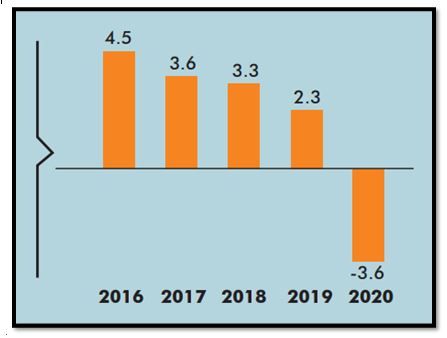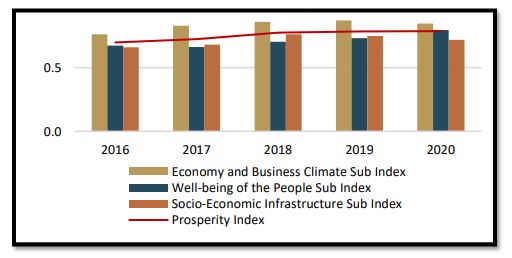The Progress of Sustainable Development Goals in Sri Lanka by 2022
January 12, 2023The Sustainable Development Goals (SDGs) adopted by all United Nations Member States including developed and developing countries in 2015 are a collection of 17 interlinked aspirational global goals designed to be a "blueprint to achieve a better and more sustainable future for all". The SDGs were developed in the Post-2015 Development Agenda as the future global development framework to succeed the Millennium Development Goals (MDG) which ended in 2015. These 17 goals encompassing 169 targets and 244 indicators meet the urgent political, economic and environmental challenges facing the world.
There are 194 countries including Sri Lanka that have agreed to comply with SDGs by improving lives while protecting the planet over the next fifteen years (by 2030). The 17 SDGs or Global Goals is being achieved via initiating and continuing a variety of development-oriented programs in Sri Lanka. This attempt brings out the prevailing results from the indicators related to SDG progress in Sri Lanka for the first 6 goals.
Progress of Sustainable Development Goals
The first goal of ‘End poverty in all its forms everywhere’ includes 7 targets and 14 indicators. According to the Central Bank of Sri Lanka (CBSL, 2020) statistics, poverty headcount ratio indicates a decline from 8.9 (2009/10) to 6.7 (2012/13) to 4.1 (2016). Further Gini coefficient of household income in 2016 has been recorded as 0.45.
SDG number two; ‘End hunger, achieve food security and improved nutrition and promote sustainable agriculture’ includes 8 targets and 13 indicators. As per the CBSL statistics, the average daily kilocalorie intake was 2,111 (2012/13) and 2,095 in 2016.
The third goal; ‘Ensure healthy lives and promote well-being for all at all ages’ includes 13 targets and 27 indicators. Accordingly, the maternal mortality ratio, premature mortality and infant deaths are crucial criteria. In 2016, the crude birth rate was 15.6 per 1,000 persons and has declined to 13.8 in 2020. The crude death rate also indicates a slight decline in number from 6.2 per 1,000 persons in 2016 to 6.0 in 2020. The infant mortality rate shows an increase from 8.2 per 1,000 live births in 2013 to 8.5% in 2015.
The fourth goal is to ‘Ensure inclusive and equitable quality education and promote lifelong learning opportunities for all’ that expands to include preprimary education, vocational and technical education for employment and entrepreneurship, qualified teachers and eliminate gender disparities in education, etc. According to the recent CBSL statistics, the entire literacy rate is 93.2% (2015) and 92.9% in 2019. The government expenditure on education in 2016 is 2.0% of the GDP while it has declined to 1.9% in 2019. University admission as a percentage of eligibility was 18.6 (2016) and 22.5% in 2019. With regard to primary education, the net school enrolment ratio was 95.9% in 2016 that has reached 91.1% in 2020.
In the 5th goal; ‘Achieving gender equality and empowering all women and girls,’ a sensitive concern is drawn to eliminate discrimination, violence and any other harmful practices against women and provide women with equal access to economic activities. Without any doubt, water is a basic need for living purposes. Therefore the 6th goal is to ‘Ensure availability and sustainable management of water and sanitation for all. In 2020, access to safe drinking water is 93.2% per unit and it is an increase of 3.5% since 2016. Further, pipe-borne water access in 2016 was 47.7% which increased up to 53.1% in 2020.
Economic Growth and Key composite indices
During the past five years, the economic growth rate of Sri Lanka maintained a falling trend starting from 5% to 4.5%, 3.6%, 3.3% and 2.3% from 2015 to 2019 respectively. Due to the adverse effects caused by Covid-19 the economy reached a negative value of -3.6% last year. In 2019, the distribution of employees in agriculture (25.3%), industry (27.6%) and services (47.1%) have changed into agriculture (27.1%) industry (26.9%) and services (46.0%). Precisely the statistics indicate an increase in the agriculture employment and decrease in the other sectors.
Annual Economic Growth in Sri Lanka, Central Bank (2020)
Concerning the economic and business climate and socio-economic infrastructure in the country, the Sri Lanka Prosperity Index (SLPI) provides a better guidance. Hence the index has changed 0.783 to 0.786 from 2019 to 2020. Amidst the Covid-19 pressures, the sub-theme of the well- being of the people has improved from 0.731 to 0.795 while decreases were noticed in the other indicators as economy and business climate deceased from 0.871 to 0.846 and socio-economic infrastructure from 0.748 to 0.718. Furthermore, the Human Development Index ranking for Sri Lanka has improved 73rd place to 72nd place from 2015 to 2019.
Movements of SLPI and sub-indices: 2016 - 2020, Central Bank (2020)
Current Situation
Even though Sri Lanka has shown positive trends in the Human Development Index (HDI), the current situation of economic security is threatening. People are trapped in an obscure economic crisis. The way out is uncertain and unpredictable. Shortages in necessary food items, medicine, petroleum products and continuous bans on imports add to the distress of people day by day. Therefore, some of the aforementioned triumphs in SDGs are at a stake at present. Hopefully, crises do not prevail every day. They vanish gradually with time and long-term solutions for a persisting recovery.
A way forward
According to the World Bank, Sri Lankan economy has already shown signs of weaknesses prior to the COVID-19 pandemic. Owing to the decreasing trend of foreign reserves, allocating funds to uplift SDGs has become a daunting task. In order to overcome the financial issues, academics, economists and other policy-making authorities have suggested seeking the assistance of the International Monetary Fund (IMF) and establish economic security to enable the flow of investments into Sri Lanka.
* Mrs. Dilmini Hasintha Abeyrathne is a Research Assistant at the Institute of National Security Studies (INSS), the premier think tank on National Security established under the Ministry of Defence. The opinion expressed is her own and not necessarily reflective of the institute.
-The Ministry of Defence bears no responsibility for the ideas and views expressed by the contributors to the Opinion section of this web site-

